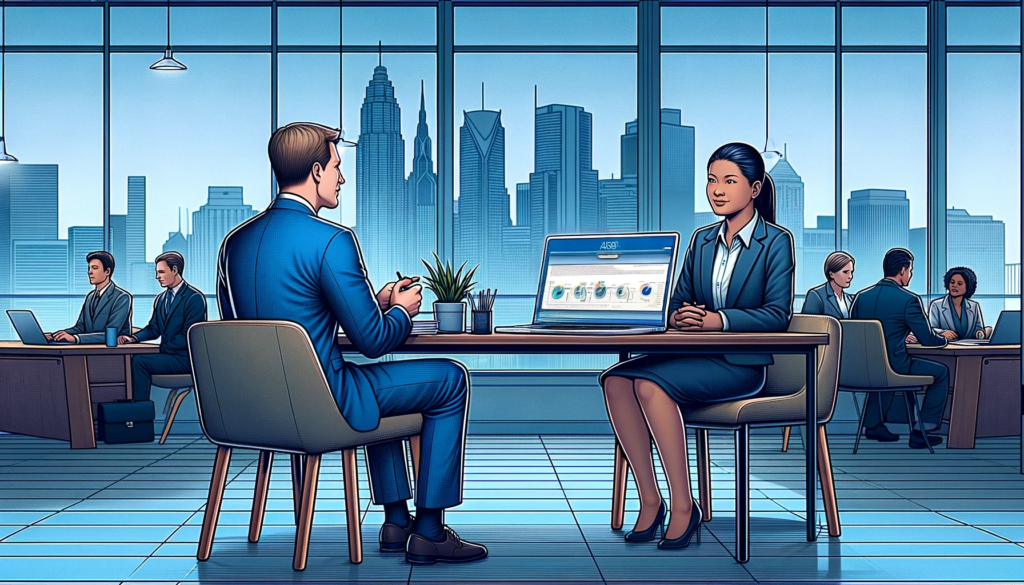Let’s start with some real talk. How many of you have looked at your workforce lately and thought, “Are we really ready for what’s coming?”
I’ll bet a lot of you just went ‘kind of me’!
The world of work is changing fast, and even the hottest companies are feeling the pressure to prepare employees for the future.
But fret not. Today we’ll explore proven strategies that leading organizations are already using to get their workforces future-ready.
By the end, you’ll have fresh ideas to upskill your team, boost engagement, and set your people up for success in navigating whatever disruptions tomorrow brings. Sound good?
Then let’s get to it!
What do you need to do to ready your workforce for the future of work?
Here are 7 points that every leader needs to implement to make their workforce ready for the future of work.
- Reskilling for the Digital Age
From AI to automation to data analytics, digital skills are in red-hot demand.
But get this – a Gartner survey found that only 10% of employees have mastery in the tech needed for their roles now, let alone in the future. Yikes!
Forward-looking companies are closing the gap fast through targeted reskilling programs.
For example, IBM offers over 15,000 online courses to equip 325,000+ employees with emerging tech skills.
AT&T provides Nanodegree programs through Udacity to build capabilities in data science, digital media, and machine learning.
What skills should you focus on? Evaluate new tech on the horizon in your industry and poll managers on the biggest team development needs.
Then craft targeted learning paths to reskill for the roles of tomorrow.
- Cultivating a Culture of Continuous Learning
Now, occasional training won’t cut it in the fast-moving digital age.
Leading companies nurture cultures where learning never stops. How so?
For starters, they provide ample resources like online courses, credentials incentives, and tuition reimbursement to motivate ongoing education.
Some firms even give employees time off each week just to learn!
But it’s not just about resources – it’s about encouraging improvement every day.
Managers could check in frequently with teams about development areas.
Leaders could role model vulnerability and share knowledge.
When learning becomes intrinsic to your work experience, employees thrive amid change.
How could you embed learning into the DNA of your culture?
- Sharpening Soft Skills
Here’s an eye-opener: LinkedIn’s 2020 survey found soft skills like leadership and communication are now more in demand than technical abilities. Who saw that coming?
Forward-thinking companies recognize with automation eating up routine tasks, uniquely human strengths like creativity, empathy, and adaptability will be workforce differentiators.
So they’re doubling down on social-emotional learning.
For example, SAP now offers over 130 courses focused on design thinking, strategic vision, collaboration, and other soft skills.
What soft skills training could boost your team’s capability to handle new challenges on the horizon?
- Preparing Next-Gen Leadership
Now a pop quiz: Who’ll be leading your teams when today’s senior leaders retire? Not sure? That’s a problem!
Savvy companies are preparing managers and high-potentials for the roles of tomorrow through accelerated leadership programs.
These intensive boot camps equip the next generation with skills to manage disruption and guide teams through change.
Rotation programs are another win.
By giving emerging leaders experience across departments, companies diversify skillsets and mindsets to dream up fresh solutions.
Don’t wait for a crisis to realize your leadership bench is empty!
Plant the seeds now by identifying and developing talent for critical future roles.
- Enabling Talent Mobility
In the future of work, learnability will trump longevity.
Companies embracing this reality offer talent mobility options so employees can flexibly move across projects and departments to expand their skills.
Some companies even provide internal gig work platforms, allowing staff to take on short-term assignments aligned with development goals.
This mobility builds resilience for whatever the future brings.
What career flexibilities could you offer?
Job shadowing, lateral moves, and stretch assignments are low-lift ways to strengthen your agile workforce.
- Providing Collaborative Technology
Want to know a secret? Providing everyday work technology and exposing employees to automation, data, and other innovations is quiet workforce development.
Forward-looking companies equip staff with cloud tools for collaborating virtually, analytics for gathering insights, and AI-enabled platforms to work smarter.
This subtle exposure builds familiarity with emerging tech so it’s less daunting.
Plus, collaboration technology keeps teams connected and working cohesively amid disruptions like remote work transitions.
- Managing Change with Empathy
Here’s the reality – even the best upskilling and mobility programs won’t succeed if employees fear the future.
This is why leading companies pair workforce development with robust change management.
How so? They provide transparency into changes happening and how jobs may evolve.
They give people a voice in shaping that evolution. And they offer ample support resources during transitions.
With empathy and compassion, you can guide teams through uncertain times.
Listen, be flexible, and keep that human connection alive. It makes all the difference.
Conclusion
The workforce challenges ahead are real but surmountable. Take inspiration from the companies leading the way in getting their people future-ready.
Begin having candid conversations with leadership about the skills your organization will need not just today, but tomorrow and beyond. Make development an ongoing journey, not a one-off event. And manage change thoughtfully, because your people are your most valuable asset.
















